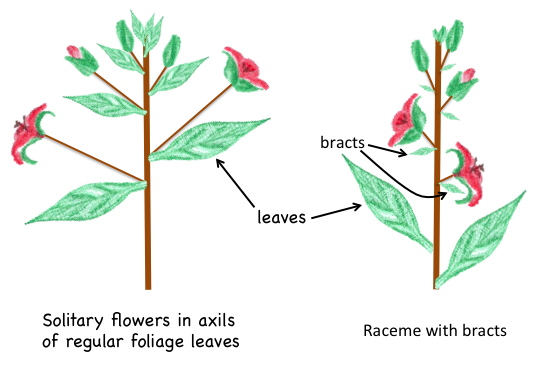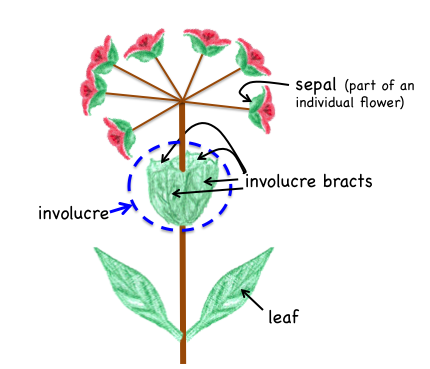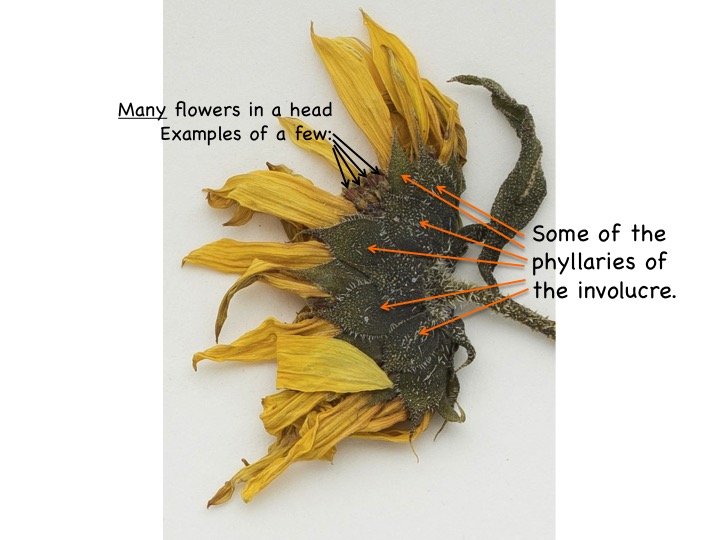Bracts and involucres
Bracts may occur within an inflorescence or below an inflorescence. The term "bract" refers to a reduced or scale-like leaf that is associated with a flower or inflorescence. Bracts may subtend individual flowers, branches in an inflorescence, or the entire inflorescence.
Sometimes it is difficult to tell whether to classify a leaf as a regular foliage leaf or as a bract. This is particulary true when trying to determine whether a plant has solitary axillary flowers or a bracted raceme:

Some bracts occur in groups at the base of an entire inflorescence. These bracts may make up a structure called an involucre.

In the Asteraceae (the sunflower family), flowers occur in heads. Each head has an involucre, and the bracts of the involucre are called phyllaries.

Test your understanding: